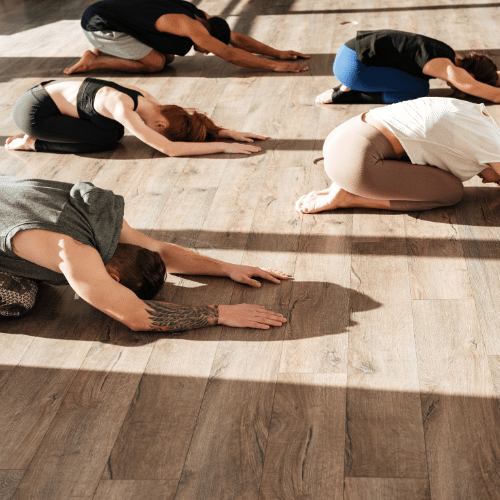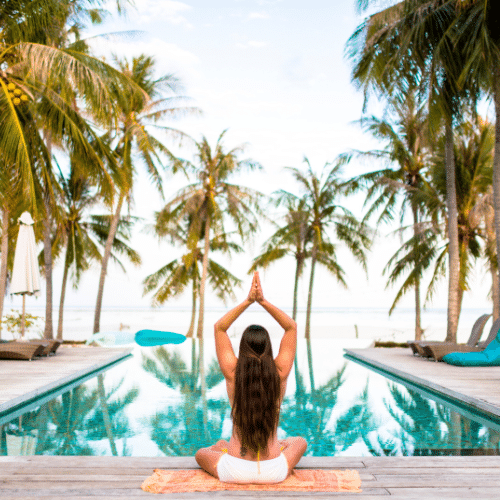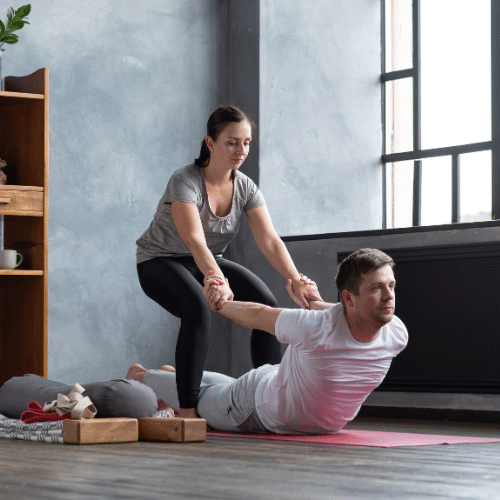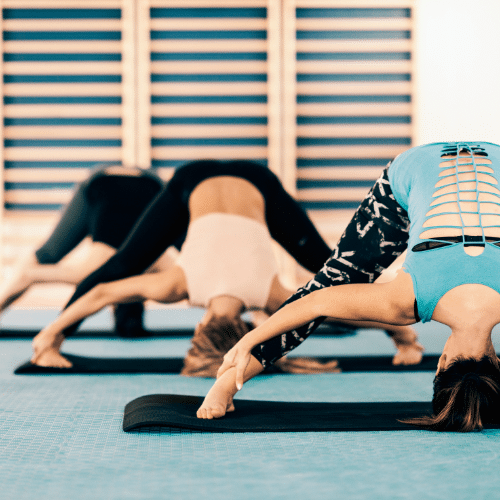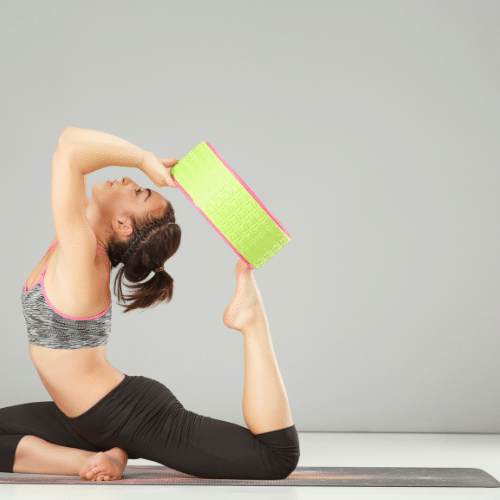Frog pose, or Mandukasana in Sanskrit, is a type of yoga pose that aims to stretch out your inner thighs and hip flexors, giving you more mobility. Since a wide-knee, face-down squat is considered an intermediate-level yoga pose, you need prior yoga experience before performing it.
However, beginner yogis can still attempt to successfully perform the frog pose. Just make sure that you’re in a studio that’s monitored by expert yogis. Additionally, knowing some easy Mandukasana modifications and tips will also help you land the pose.
With that said, regardless of skill level, read on to know the benefits of the frog pose, how to perform it, some of its modifications, and common mistakes you should avoid.
Benefits of Frog Pose Yoga
As mentioned above, both beginners and experienced yogis should definitely incorporate Mandukasana into their yoga sessions (although beginners should do it with caution). Doing so won’t only expand your yoga move skill sets, but you’ll also get to enjoy the numerous benefits the pose brings.
1. Improve Emotional and Mental Health
Performing frog pose yoga as well as some breathing exercises may improve your emotional and mental health. Once you’re focused and aware of your breathing and bodily sensations or a specific part of your body, you’ll become more mindful, which is an important trait to improving mental health.
A review even shows that any mindfulness-based stress reliever has a positive impact on reducing chronic pain, boosting mental health, and improving one’s quality of life.
2. Strengthens Back Muscles
In addition to supporting your emotional and mental health, regularly performing Mandukasana can also strengthen your back muscles, giving more support to your spine as well as improving your posture.
However, keep in mind that you should always consult with a qualified physician before doing this pose. This is especially true if you have a history of spinal injuries or chronic lower back pain.
3. Ease Back Pain
Low back pain is usually predicated by tight hip flexors. A tight hip flexor is often caused by a sedentary lifestyle. Fortunately, frog pose can counteract tight hip flexors as it’ll lengthen the sciatic nerve –– from your lower back throughout your hips. As a result, it may ease back pain that’s caused by sitting for long hours in front of a desk.
4. May Manage Diabetes
Several yoga postures, practices, and breathing exercises may help regulate the blood’s sugar levels. This means that consistently doing yoga will positively lower the chances of type 2 diabetes. In fact, a review discovers that several yoga poses, such as the frog pose, may improve how the pancreas functions.
To take advantage of this benefit, hold the frog pose for at least 30 seconds. Once you’re already comfortable with the duration, gradually increase it.
5. May Manage Stress
Even if there’s no exact study that specifically tackles how Mandukasana better relieves stress than other poses, there’s research that details how consistent yoga practice can help someone handle their stress levels. This is because yoga, if done correctly, involves breathing slowly. Slow and deep breaths are known to manage stress and anxiety.
How To Perform Mandukasana
Again, you should consult a healthcare professional before performing frog pose yoga. Once an expert gives you the green light and you’ve already warmed up to try frog pose, follow these steps.
Step 1
Start in the plank position.
Step 2
Widen your knees. Then, gradually widen your legs –– point your feet and bent knees outward. You know you’ve successfully performed this step if you feel a slight stretch in your ground and quadriceps.
Step 3
Using one arm to stabilize your body, and the other hand should reach back to grab the top of your foot (the right hand should grab the right foot, and the left hand should grab your left foot). Roll down onto your torso while making sure that your head is always raised.
Step 4
With both of your palms against the top of your feet and your elbows are pointed at a 45-degree angle, slowly press down. This should push your heels toward your hips.
 Step 5
Step 5
Maintain the pose for around 30 seconds or less, depending if the position is too intense for you. Make sure to pay attention to your breathing; utilize every exhale to deepen the stretch. Slowly release the pose and return to the first step or transition into another yoga pose.
Modifications of Frog Pose
If you find the basic way to do frog pose yoga, you can always resort to an easy modification of the pose. After being comfortable with the easy version of Mandukasana, you can try other variations like the happy baby pose, thread the needle, half frog pose, and reclined bound angle pose.
However, once you’ve already mastered the basics, you should start practicing the extended frog pose modification, or Uttana Mandukasana. Here’s how you can perform it.
Step 1
Start kneeling, but your knees should be spread wide.
Step 2
Touch both of your big toes behind your back. Make sure both of your soles are facing up.
Step 3
Cross your forearms behind your back.
Step 4
Open your chest and stretch your spine.
Step 5
Press your head back into your arms.
Step 6
Take deep and slow breaths while maintaining the position for up to three minutes.
Common Mistakes and How To Avoid Them
If you feel pressure or strain while doing the frog pose, it might be because of these common mistakes.
Forcing Your Knees
Forcing your knees to stretch wider may result in a groin injury. As a solution, ensure your mat has traction or invest in knee pads and non-slip grips. This way, your knees won’t accidentally slip too deep.
Forgetting to Breath
Since breathing is an important aspect of frog pose, make sure not to hold your breath. This mistake usually occurs if the stretch is already unmanageable. Instead, try this technique: on every inhale you take, extend your spine. On every exhale, deepen the stretch.
Takeaway
Since frog pose is non-beginner friendly, it’s always best to practice the pose with caution. One way to do so is to have an expert keep an eye on you as you’re performing the steps. Sooner or later, you’ll have the flexibility to fully harness all of the benefits Mandukasana provides.


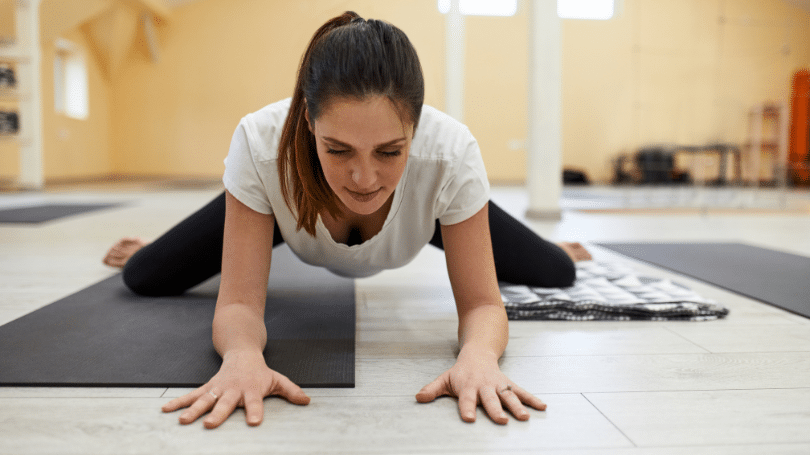

 Step 5
Step 5